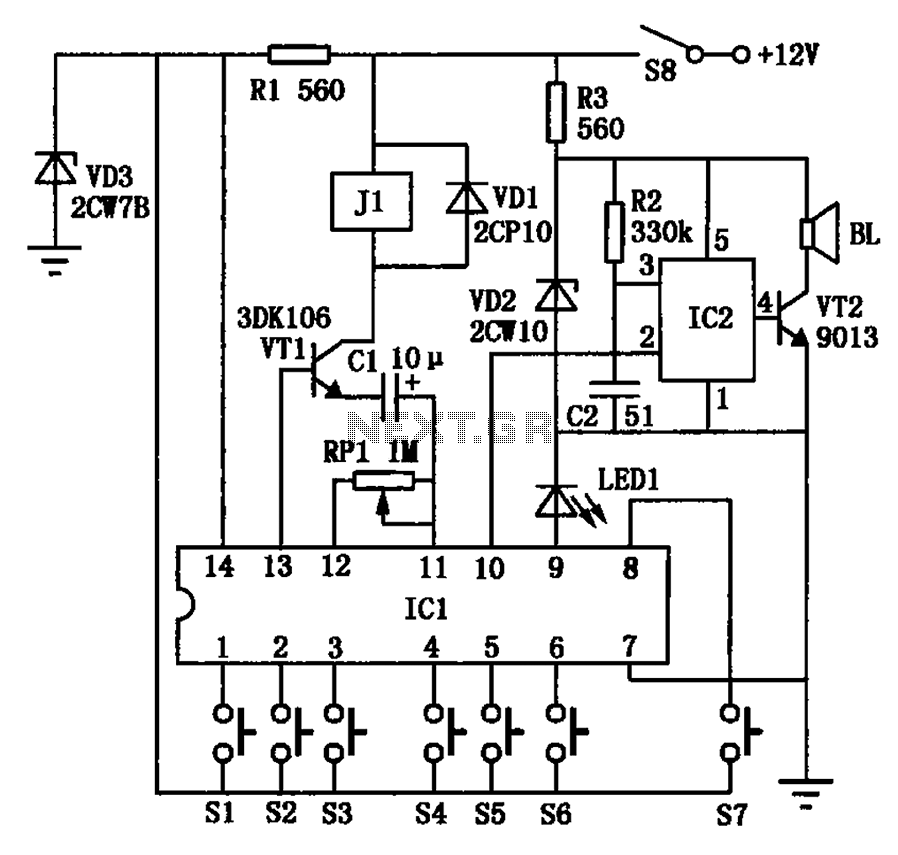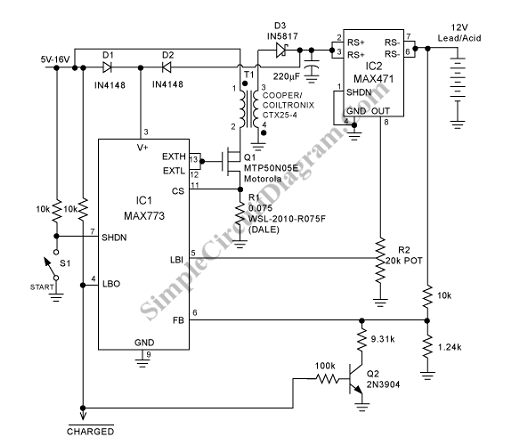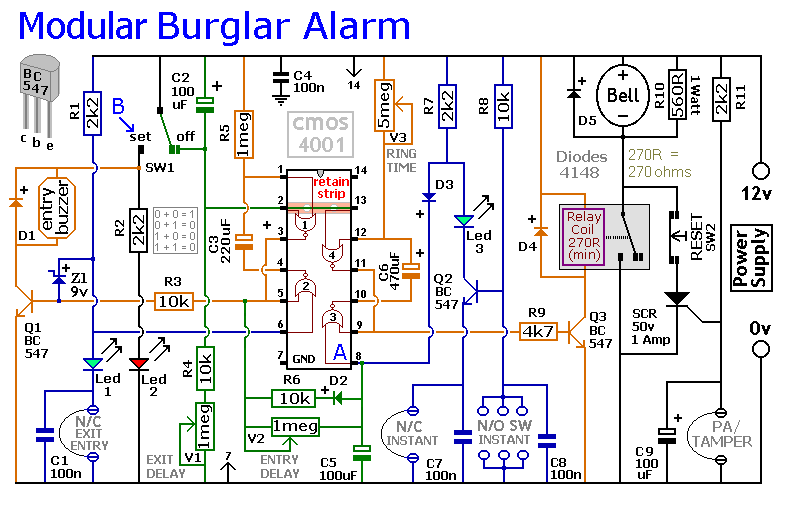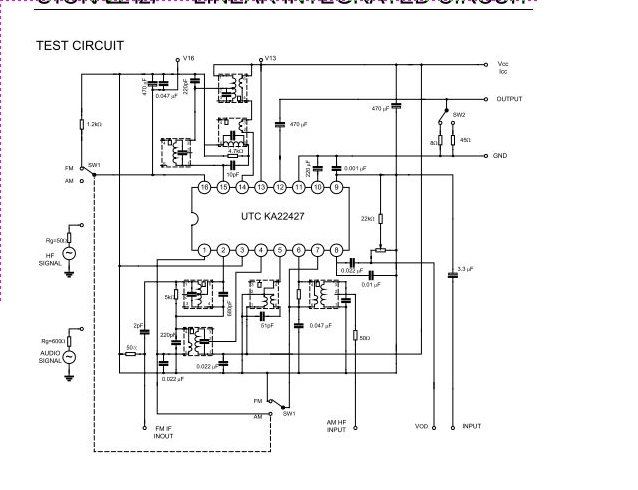
Automotive electronic locks circuit

The automotive electronic locks circuit principle is illustrated with the dedicated lock IC 5G058. It features an external key switch connected to the positive power supply. The circuit includes six valid input keys, unlock keys S1 to S6, which must be activated in a specific order. An additional key switch, S7, serves as a false key input, allowing for the mixing of real and false keys on the keyboard. A designated key indicator pin activates an external light-emitting diode (LED1) to confirm that the key input is valid. An alarm output terminal is triggered if the keys S1 to S6 are not input sequentially or if the effective unlocking time is exceeded. The effective unlocking time is determined by the values of capacitor C1 and potentiometer R1.
The automotive electronic lock circuit utilizes the 5G058 integrated circuit, which is specifically designed for lock control applications. The circuit operates on a positive voltage supply, which powers the key switches and the lock mechanism. The valid input keys, S1 to S6, are arranged in a sequence that must be followed for the lock to disengage. This sequential input requirement enhances the security of the locking system, as it prevents unauthorized access through random key presses.
The additional key switch, S7, allows for the introduction of false inputs without triggering the lock. This feature can be used for testing or to provide a level of flexibility in key management. The circuit includes a key indicator pin that connects to an LED (LED1). When a valid key is pressed, the LED illuminates, providing visual feedback to the user that the input has been recognized by the system.
In the event of an incorrect key sequence or if the unlocking process exceeds the predetermined time, an alarm output is activated. This serves as a theft deterrent, alerting the vehicle owner or nearby individuals to a potential security breach. The duration of the effective unlocking time is adjustable through the combination of capacitor C1 and potentiometer R1. By varying these components, the circuit designer can tailor the lock's response time to meet specific security needs or user preferences.
Overall, the automotive electronic locks circuit is a sophisticated system that combines security features with user-friendly operation, making it an effective solution for vehicle locking mechanisms. Automotive electronic locks circuit principle is shown in Fig. ICl dedicated lock IC 5G058, it O ~ feet respectively external key switch to the positive power supply, which is six valid input keys, unlock Sl ~ S6 must comply with this order; feet have connected key switch S7 is false key input, you can freely access one or a few keys on the keyboard mixed into real ones; a feet is the key indicator pin during each key communication will make the external light emitting diode emitting LEDl confirm that the key input is valid; ? feet alarm an output terminal, if not by Sl ~ S6 sequentially input or exceed the effective unlocking time, the output high, burglar alarm trigger IC2 language effectively unlocking time by the size of the capacitor C1 and potentiometer RPl to decide.
The automotive electronic lock circuit utilizes the 5G058 integrated circuit, which is specifically designed for lock control applications. The circuit operates on a positive voltage supply, which powers the key switches and the lock mechanism. The valid input keys, S1 to S6, are arranged in a sequence that must be followed for the lock to disengage. This sequential input requirement enhances the security of the locking system, as it prevents unauthorized access through random key presses.
The additional key switch, S7, allows for the introduction of false inputs without triggering the lock. This feature can be used for testing or to provide a level of flexibility in key management. The circuit includes a key indicator pin that connects to an LED (LED1). When a valid key is pressed, the LED illuminates, providing visual feedback to the user that the input has been recognized by the system.
In the event of an incorrect key sequence or if the unlocking process exceeds the predetermined time, an alarm output is activated. This serves as a theft deterrent, alerting the vehicle owner or nearby individuals to a potential security breach. The duration of the effective unlocking time is adjustable through the combination of capacitor C1 and potentiometer R1. By varying these components, the circuit designer can tailor the lock's response time to meet specific security needs or user preferences.
Overall, the automotive electronic locks circuit is a sophisticated system that combines security features with user-friendly operation, making it an effective solution for vehicle locking mechanisms. Automotive electronic locks circuit principle is shown in Fig. ICl dedicated lock IC 5G058, it O ~ feet respectively external key switch to the positive power supply, which is six valid input keys, unlock Sl ~ S6 must comply with this order; feet have connected key switch S7 is false key input, you can freely access one or a few keys on the keyboard mixed into real ones; a feet is the key indicator pin during each key communication will make the external light emitting diode emitting LEDl confirm that the key input is valid; ? feet alarm an output terminal, if not by Sl ~ S6 sequentially input or exceed the effective unlocking time, the output high, burglar alarm trigger IC2 language effectively unlocking time by the size of the capacitor C1 and potentiometer RPl to decide.





